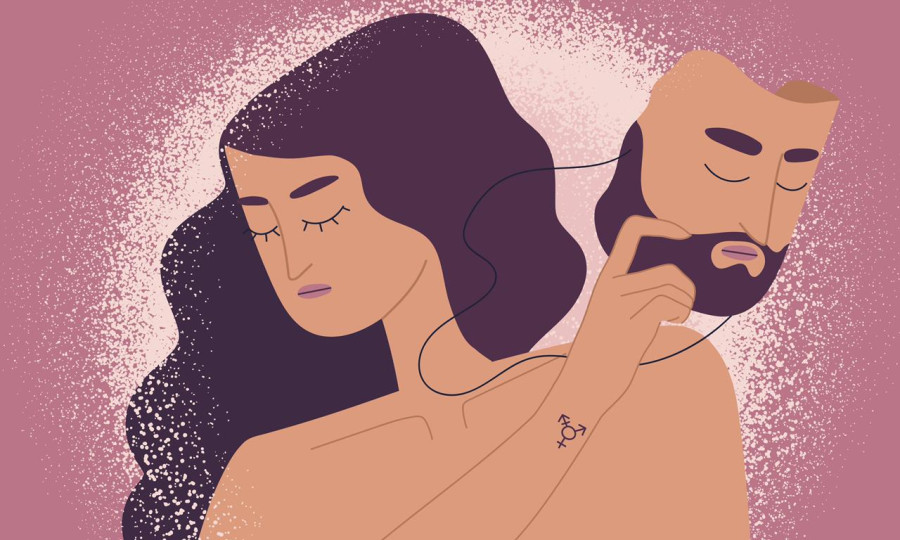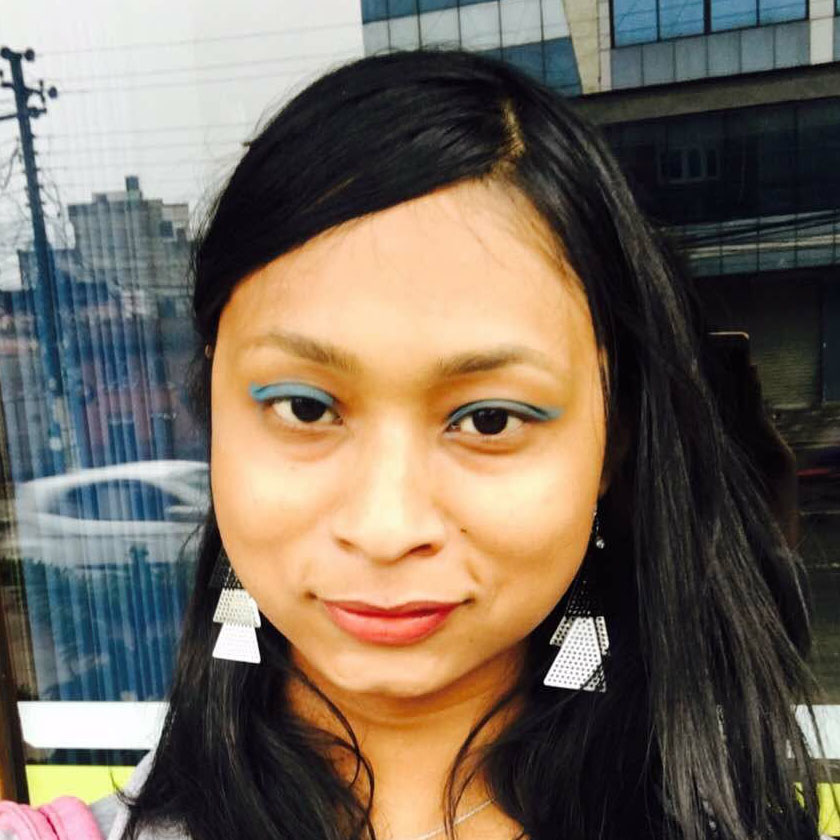Columns
Crossdressing traditions are not a yardstick of trans friendliness
Men dressing up as ‘women’ is good for festivals; it doesn't mean society is trans-friendly.
Rukshana Kapali
The decolonial discourse on the rights of transgender and gender-diverse people across academia and media has long upheld a variety of ancient cultures and traditions in South Asia for their deviation from cisnormativity and the gender binary. Aspects of various cultures in Nepal, too, exhibit such nonconformity to the status quo which makes it pop up on their radar—it manifests distinctly in the many festivals and celebrations in Nepal, such as Saa Paaru and Matayaa, where cisgender men get to perform as 'women'. But can these traditions truly be considered instances of our culture’s acceptance of gender diversity and fluidity?
Saa Paaru, also translated into Nepali as Gai Jatra, receives special attention on the subject of gender non-conformity because of its exhibition of cross-dressing. While the central purpose is to commemorate the souls of the deceased, Saa Paaru is also characterised by its festive flair and extravaganza. People can thus often be observed engaging in role-playing and theatrical skits during the procession, and it is not unusual to encounter men dressed up and role-playing as women, and sometimes even the reverse. Saa Paaru sees fewer instances of cross-dressing in comparison to Matayaa, another festival commemorating the dead that is observed primarily in Yala Dey (Lalitpur). I can speak for both based on my firsthand experiences of Saa Paaru on my maternal side and Matayaa on my paternal side, as a member of the Newa community which celebrates these festivals.
Grossly misleading
At such festivals, it is common to observe a cisgender man, who conforms to cisnormativity and heteronormativity every other day of the year, dress up as a woman in plain view. The intent, however, is highly problematic as the purpose of such a 'performance' is to entertain via mockery which is a far cry from the lived experiences, expressions and identities of transgender women and gender non-conforming people in Nepal. The portrayal of such traditions as instances of acceptance and tolerance toward transgender and genderqueer persons is, therefore, grossly misleading. The reality is that societies that observe such traditions do not embrace transgender and gender non-conforming folks in practice, such that marginalised queer folks celebrating these festivals—myself included—are not afforded the acceptance and tolerance symbolised in such trans-inclusive cultures.
The act of men dressing up as women, furthermore, is not a step towards normalisation. It rather stems from ridicule. Such inaccurate portrayal is more harmful than empowering, as it reinforces cisnormative and transphobic narratives that transgender people are just men playing dress-up, and that our existence is an apt subject for comedy. The legitimisation of the occasional performance further reduces our existence to artifice, feeding into such detrimental notions that trans women aren’t women because our expressions of gender are not accepted as real.
Moreover, cross-dressing practices often have misogynistic underpinnings. There are many performances like daboo pyakhan and dya pyakhan where men play the role of women. Many rituals practised in the Newa community witness men playing female characters because it is considered indecent for women to dance or perform in public. Men, therefore, took up the roles of women in many traditions to uphold their own misogynistic values which ultimately has nothing to do with the acceptance or celebration of trans- and gender non-conforming persons in our society.
'Saapaaru wala kaa.' (The procession of Saa Paaru has come.) 'Matyaa waneta wamha then chon kaa.' (Looks like you’re about to head to Matayaa.) 'Saa chhogu swa saa swey mwaa.' (If they have seen someone being sent to the Saa Paaru procession, they don’t have to look at you.) These are some examples of the kind of derogatory remarks flung at transgender and gender-diverse people in the Newa community by using the subversive practices of Saa Paaru and Matayaa as a vehicle to drive their insults home.
It is, therefore, misleading to believe that being a participant in Saa Paaru holds a queer-positive or empowering connotation. To be referred to as a subject of Saa Paaru beyond its performative and subversive context is offensive and derogatory, as in the aforementioned instances, and is representative of the kind of stigmatisation and name-calling faced by trans and gender non-conforming folks in the Newa community and across Nepal. This highly problematic social reality is ignored in the glorification of such festivals as being trans-friendly.
While it would be disingenuous to label the entirety of the festivals as trans-friendly, there can be certain instances where a transgender or gender non-conforming individual furthers their self-exploration by drawing from existing cultural events. I have met, for example, a person well into their 50s who identifies as a maibabu, a traditionally prevalent terminology in Nepal Bhasa to refer to someone who does not conform to the gender binary. They said that during their childhood, these festivals were the only occasions when they could dress the way they wanted, and be out on the streets in the public eye.
Not trans-friendly
In such contexts where transgender and gender non-conforming individuals draw their exploration from existing cultural practices so they become a source of their self-expression and empowerment which they then take into practice, it can be empowering to trans and non-conforming persons. But the culture as a whole cannot be seen as a symbol of trans- and non-conforming acceptance or empowerment, least of all social acceptance, respect and honour, so it would be inadmissible to conclude that ‘Nepali society’ is trans-friendly.
The mainstream decolonial conversation on gender glorifies Eastern cultures as being more accepting of gender fluidity and diversity. It is wrong to say that transphobia and enbyphobia didn’t exist before colonisation. European colonisation brought its own form of transphobia and enbyphobia, but our cultures also had, and have, their own local forms of these phobias. Especially, because Nepal was not directly colonised by any European nation, can we even say that European colonialism had to do ‘everything’ with Nepal’s transphobia and enbyphobia? These conversations also often ignore the caste system and ethnonational dynamics, and that the idea of ‘Nepali culture’ or ‘Nepali society’ is built on Khas-Arya Brahministic Hinduism as its yardstick.
The acceptance of cisgender men dressing up as women on a particular day for festive and comedic purposes does not mean that the society engaging in, and endorsing, such cultural practices in actuality, understands, respects and is accepting of transgender and gender non-conforming folks. We must, therefore, practice caution in interpreting such practices as trans- and non-conforming-friendly.




 18.12°C Kathmandu
18.12°C Kathmandu















